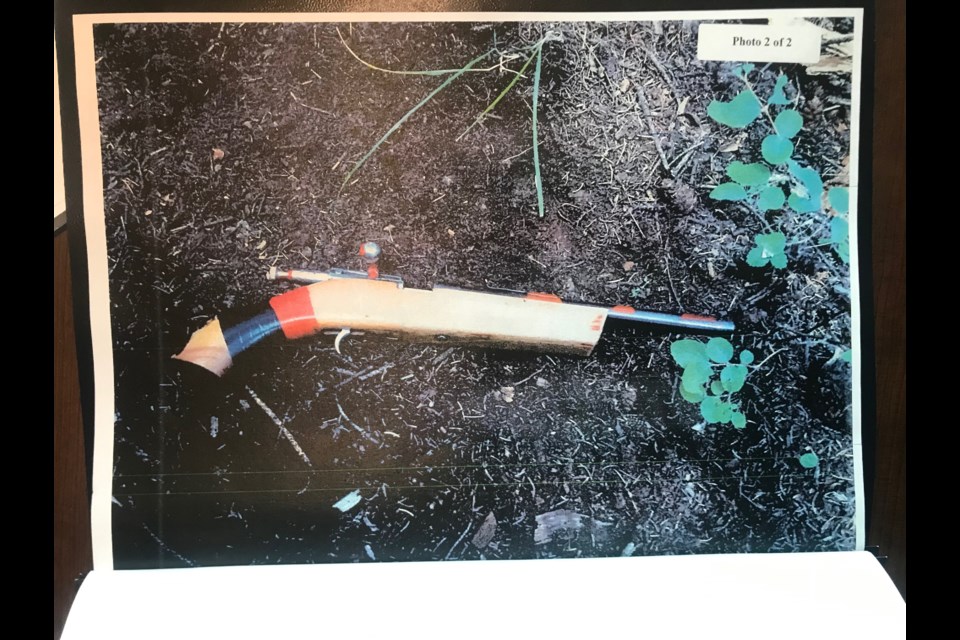CALGARY – Eyewitness testimony and a social media status led Provincial Court Judge George Gaschler to a guilty verdict for the 17-year-old accused of shooting German tourist Horst Stewin in the head in August 2018.
"There was a significant amount of testimony to consider," Judge Gaschler said in Calgary's Court of Queen's Bench Friday (Oct. 18) morning.
The youth from Stoney Nakoda, who was 16 at the time of the Aug. 2, 2018 shooting and cannot be named under the Youth Criminal Justice Act, looked straight ahead as the Judge read his decision out in the courtroom.
Citing eyewitness testimony and evidence from social media that indicated the accused’s guilt, Judge Gaschler said the youth was "the shooter beyond a reasonable doubt."
The youth was found guilty of aggravated assault and one count of discharging a firearm with intent. Due to the similarity of the other three charges, Judge Gaschler dismissed them.
Originally facing 14 charges, the Crown prosecutor withdrew nine of the charges, including attempted murder, before the trial began, citing the unlikelihood of a conviction. The case continued against the youth with charges of aggravated assault, assault and three counts of discharging a firearm with intent.
Defence laywer Balfour Der requested a Gladue report, a pre-sentencing report that takes offenders Indigenous background into consideration, before sentencing.
Stewin was driving along Highway 1A with his wife, his son and his son's girlfriend, during his 60th birthday trip to Canada, when a vehicle pulled up alongside the family, changing Stewin's life forever.
Shot in the head during a drive-by shooting, Stewin lost control of the vehicle and ended up in the ditch off the highway when his family realized what had happened and called 911.
Spending two weeks in the Foothills Medical Centre before being transported back to Germany where brain surgeons removed eight bullet fragments from his head, Stewin is now paralyzed on his right side.
During the trial, Prosecutor Dane Rolfe noted Stewin had to learn how to write with his left hand, faces memory issues and attends therapy three times a week for speech and writing.
“His prognosis for a full recovery is guarded, at best,” Rolfe said during the trial.
Passengers who were in the vehicle with the accused testified during the first week of the trial to the level of impairment of the group that day and the potential explanation of mistaken identity for why a gun was fired at the other vehicle.
The Stewin family was also set to testify during the first week of the trial, but due to translator issues, their roadside statements were entered as evidence instead.
“First, I thought it was exploding, like the wheel exploded … and then I looked at my dad and he was sitting like with his head down and I thought, what the hell,” Daniel Stewin said in his interview with police.
The victim's son explained how he tried to steer and brake the vehicle from the passenger's seat, while his mother and girlfriend were shouting and crying in the back seat, but he couldn’t get control of the vehicle.
“My mom said 'he got shot, he got shot,' and then I saw, at that moment, I first saw that there was a shooting, [a bullet] hole in the glass,” he said.
The youth did not testify in his own defence.
Despite being scheduled for two weeks, the trial only lasted a week with closing arguments presented at the end of August.
Defence highlighted the inconsistency of the eyewitness statements, including the Stewin family’s roadside statements where his wife described the shooter as Caucasian, 30 to 40 years old, despite the accused being Indigenous and 16 years old at the time of the shooting.
During closing arguments, Crown prosecutor Rolfe said it was a “clear example of someone being honest, but just wrong in a stressful situation.”
A sentencing hearing is expected for February 2020.




